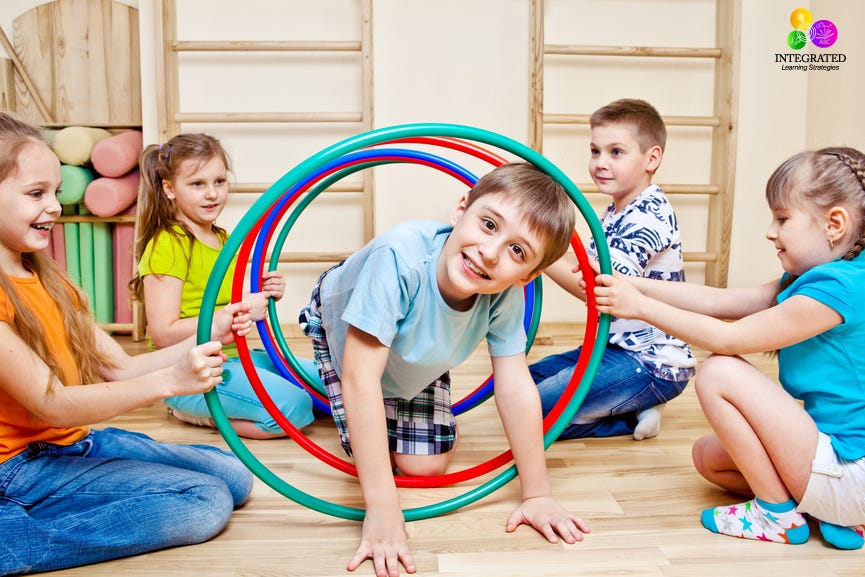Why Does Gender Awareness Matter?

The current outburst wave of sexual mistreatment, misconduct, and abuse of women by men in the workplaces, in the community, not to mention in the homes left us all wonder and question whether we have done our part, our responsibility, and accountability for our own actions towards one another as we mingle and socialize!
Carly Fiorina, a former CEO of Hewlett Packard and the 2016 Republican Presidential nominee said, the current wave of the sexual harassments allegations from Hollywood to Capitol Hill “will only be a watershed moment if men decide to step forward”. Though she may have a point there, traditionally, male chauvinism and ego will not allow them to step forward. It will mean self-defeat, and who will bring self-down voluntarily? Perhaps it will take a village to help men keep their acts together and “man-up” for their daughters, sisters, aunties, wives, and mothers!
Now, we have heads of states, Hollywood moguls, journalists, Joe the plumber, and or taxi-drivers all have been sexually misbehaving towards women! Of course, in all walks of life, there are bad apples and oranges, but when the bad multiplies, will eventually infect all and become pandemic if not contained!
In trying to find some answers to this disturbing sexual harassment behaviors by men, looking at the root cause of this problem from the context of gender biases and stereotypes that begins from early years of age and continues as they grow old will be a viable measure and inevitable way, if we want to restrain sexual misconduct from its root!
So, instead of waiting for men to step forward, mothers and teachers especially should more than ever before become more aggressive in addressing and teaching moral compass to our children-teaching our boys what being girls means to boys and what being boys means to girls-how to be respectful, responsible, and accountable for our interpersonal relationships and social-interaction behaviors.
The current ongoing wave of sexual misconducts and sexual harassment allegations against women make every woman and mothers wonder whether we have done a good job in raising our children and teach them enough about gender and the respect for gender differences and what it means from early years of their age.
Now than ever before, we need to look back and rethink on how to counteract gender stereotypes with young children so that they (boys especially) grow up with awareness of acceptable pro-social conducts and interpersonal interactions, boundaries of interacting and relating to one another and healthy relationship building. We must raise boys and girls who will grow up not only respecting one another but also responsible for their actions towards one another!
How do young children’s experiences with gender bias affect their development and opportunities for leading successful lives later in the workplaces, in the communities, and in the homes? What can mothers and teachers do to intervene and counteract these stereotypes?
Joannie M. Schrof, a journalist and an editor have said, “Despite current applause for gender equality, children seem to be as stereotypically sex-typed as those of yesteryear.”
Stereotypes and sexism limit potential growth and development because internalizing negative stereotypes impacts self-esteem and ultimately, academic performances of learners and for adults, it affects work performances and relationships with one another and or with their spouses.
There are many stereotypes in every society! Some of the stereotypes are negative and others are positive, however, all stereotypes contribute to a culture of prejudice, which is communicated in words and actions to families, communities, and young children (Derman-Sparks, 2001).
The early gender bias experiences that children encounter can shape their
· Attitude and beliefs related to their development of interpersonal
and intrapersonal relationship,
· Access to educational equity,
· Participation in the corporate work world, as well as
· Stifling their physical and psychological well-being (Hendrix &
Wei, 2009).
(https://youtu.be/kJP1zPOfq_0)
It is critical for educators especially early childhood educators to be aware and vigilant about the effects of gender stereotypes because the concepts of gender identity (intentionally and unintentionally) are applied on children even before they are born, e.g. baby’s room be painted blue or pink, and choices of play toys to symbolize the gender of the child!
Children begin to form concepts of gender around age 2, and most children know if they are a boy or a girl by the age of 3 (Martin & Ruble, 2004).
Children develop their gender identity and begin to understand what it means to be male and or female between ages 3 and 5 years, and soon as children become gender aware, they begin developing stereotypes, which they apply to themselves and to others, in an attempt to give meaning to an understanding of their own identity!
By ages 5 these stereotypes are well developed and become rigidly defined between ages of 5 and 7, making the preschool years a critical period to deal with gender stereotypes (Martin & Ruble, 2004).
Long-term gender bias effects become most apparent in students during adolescence (Carlson Egeland & Sroufe, 2004).
Educators, particularly preschool educators can help children develop a positive sense of their own gender. Teachers who are familiar with the factors that influence gender identity and stereotype development, and who understand the child’s active role in gender identity formation, can more effectively counteract and even neutralize gender bias in their classrooms and attempt to prevent the formation of children’s gender stereotypes (Zaman, 2007). They say prevention is better than cure! If we catch them during their early years of learning, it will save them during their old ages as had learned and refrained from behaviors that are gender identity influenced and stereotypes.
Theories of Gender Development
Lawrence Kohlberg was one of the first theorists to address gender as a learned, cognitive concept. Kohlberg believed that children’s cognitive understanding of gender influenced their behavior (Kohlberg, 1981). Kohlberg’s thinking was influenced by Jean Piaget, who portrayed children as active learners who use interactions with their environment to construct an understanding of the world around them.
These early ideas have been supported by research, and in one study, children were asked about traditional and non-traditional images of women as portrayed in books. Children as young as age 5 were able to use outside knowledge or assumption to reconcile ideas that conflicted with their worldview. They rationalized and used “probably” statements to explain how they come to their conclusions, with or without the use of stereotypes. This research supports Gender-Schema Theory (Martin & Ruble, 2004) which involved the creation of organized structures of knowledge that influence thinking and behavior.
Also, Lev Vygotsky on social interaction played a fundamental role in cognitive development-the ways people interact with others and the culture they live in shape their mental abilities and behaviors (sociocultural theory). Imitation and instruction are vital components to children’s development. Adults promote this learning by role-modeling behavior, assisting with challenging tasks and passing along cultural meanings to events and things, all of which are components of gender development.
Therefore, as adults, we are responsible in raising our children as moral individuals and we need to do more to model the behaviors we want to see in ourselves, in our children, in our community, and in our homes!
Influences on Gender Identity and Stereotypes
Gender stereotypes are pervasive in the media and popular culture (S. Saltmarsh, 2009). From consumer products inundate children with gender-typed on messages on bed sheets, towels, bandages, clothes, school supplies, toys and furniture (Freeman, 2007); to media advertising products e.g. cars or computers sales, typically depicting men and boys as competent users, engaged on active or professional roles, while women and girls were passive observers or merely posed next to the cars/computer while looking pretty or provocative. Same as in movies which convey powerful messages about gender roles and stereotypes.
It is from these treatments of women and girls (gender inequality in many levels) that creates the unwanted and bad behaviors we currently see in many men towards women!
From preschool settings to the higher learning institutions gender inequalities have been observed and it’s now up to the teachers, families (mothers especially) to work more closely with children from young years of age to combat the negative gender identity behaviors that culminate to sexual behavior misconducts and sexual abuses on women.

The classroom environment can not only affect how young children understand the importance of social issues, such as those of gender, but also what they think about themselves and others.
Teachers have the tremendous influence on ideas about gender significance and the role of each gender that must comply with to maintain proper interpersonal interactions and social relationships. Instead of praising girls for their clothing, hairstyles, neatness, and helping behaviors; and in contrast praising boys for their strength, physical skills, sizes, and academic competence or accomplishments, it is better to adopt a neutrality position when addressing boys and girl’s world from early on.
Likewise, families influence gender learning when they reinforce or discourage specific behaviors, for example, mothers are more likely than fathers to encourage collaborative play with both sons and daughters, but fathers are more likely than mothers to react negatively to cross-gender behavior, especially with sons; sons are more likely to be told stories of autonomy and achievement, while daughters are more likely to be told stories of relationships or support; fathers more often told stories of mastery and success, while mothers’ stories were usually a direct expression of emotion.
Therefore, moving forward in combating sexual harassment and or abuse towards women, teachers are to be prepared to promote equitable teaching and families confront gender differentiation and identity construction at homes by demonstrating unbiased interactions and communication, provide encouragement and coaching both girls and boys as having equal abilities and talents to tackle anything they put their hands or heads to.
The power of self-concept is profound, as is the ability of adults to influence the children around them. Families and teachers are encouraged to consciously and intentionally create and promote a positive learning environment-not just in promoting developmentally appropriate practices to stimulate cognitive, emotional and physical domains, but to create a moral compass for what they learn, as well as help shape a global, multicultural, and anti-bias worldview.
Young children create and internalize their own meaning of gender, based on the social cues of the adults, environment, and media around them. Adult, in turn, have a responsibility to ensure that those cues and messages create a healthy understanding of what it means to be male and female (Derman Spark, 2001).
By equipping young children with positive messages of empowerment regardless of gender, in addition to the critical thinking skills to identify stereotypes, teachers and families can impact in children's self-concept resiliency, even when faced with negative stereotypes (Small, 2003). Those children will then be less likely to perpetuate the stereotypes and can help end the cycle of prejudice against girls and women. (Dimensions of Early Childhood, Vol. 39 №3, 2011).





